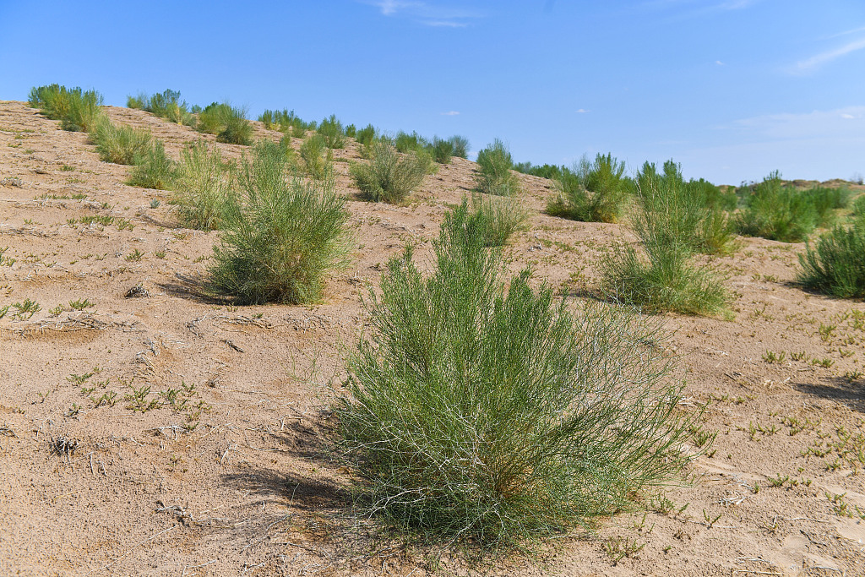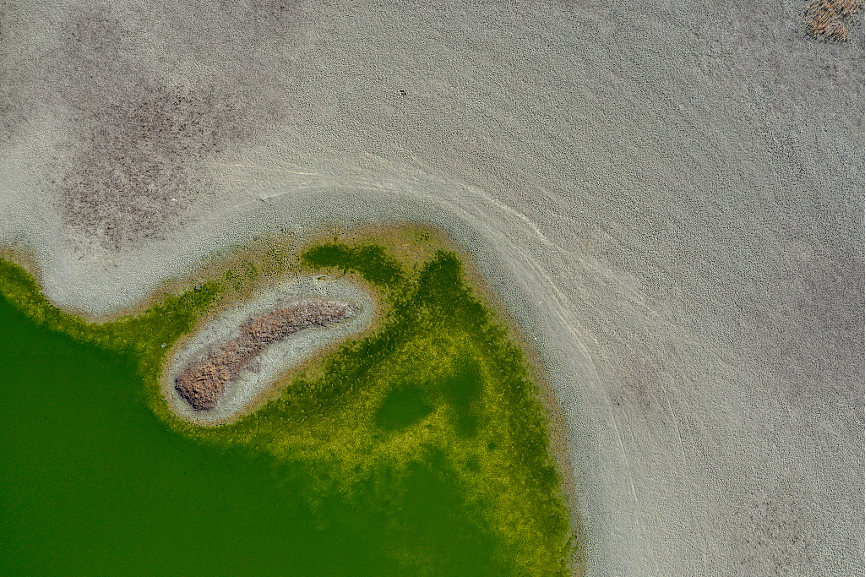China regained over 6.7 million hectares of land from desertification in 2021, according to the country's forestry authority.
The data was released by the National Forestry and Grassland Administration(NFGA) on Thursday ahead of the International Day Against Desertification and Drought.
The event which falls on June 17 every year is designed to promote public awareness of international efforts to combat desertification, which is among the greatest threats to sustainable development, especially in developing countries, according to the UN. This year's theme is "Rising up from drought together".
According to the NFGA, China cut back desertification and rocky desertification by over 6.7 million hectares and over two million hectares respectively in 2021. Earlier date shows that from 2016 to 2020, China reclaimed nearly 11 million hectares of land from desertification.
NFGA attributed the achievement to the multi-pronged actions by the central and local governments: including central governments' financial support, scientists research efforts, individuals' participation in the national forestation campaign, international cooperation, among others.

The sand blocking network is arranged in an orderly way in NW China's Gansu Province, so that the wind-blown sand can be effectively controlled. /CFP
The sand blocking network is arranged in an orderly way in NW China's Gansu Province, so that the wind-blown sand can be effectively controlled. /CFP

The Haloxylon ammodendron, known as the desert guardian, is an extremely important windbreak and sand-fixing plant. The plant is widely distributed in desert and semi-desert areas. /CFP
The Haloxylon ammodendron, known as the desert guardian, is an extremely important windbreak and sand-fixing plant. The plant is widely distributed in desert and semi-desert areas. /CFP

On both sides of a highway in NW China's Xinjiang Uygur Autonomous Region, a grid of reeds has become a "sharp tool" for sand control and sand fixation. /CFP
On both sides of a highway in NW China's Xinjiang Uygur Autonomous Region, a grid of reeds has become a "sharp tool" for sand control and sand fixation. /CFP
Desertification is the process of land degradation from soil and vegetation to drylands, caused primarily by human activities and climatic variations.
According to the Intergovernmental Panel on Climate Change(IPCC), drylands currently cover about 46 percent of the global land area and are home to three billion people. Data from the World Meteorological Organization in 2021 shows that the world is seeing more and longer droughts since 2000 - the number and duration of droughts has increased by 29 percent since 2000, as compared to the two previous decades - suggesting that the situation may get worse.

People gather at the Castaic Lake reservoir in Los Angeles County on May 3, 2022 in Castaic, California. The reservoir, part of the State Water Project, is currently at 52 percent capacity, below the historic average of 60 percent. /CFP
People gather at the Castaic Lake reservoir in Los Angeles County on May 3, 2022 in Castaic, California. The reservoir, part of the State Water Project, is currently at 52 percent capacity, below the historic average of 60 percent. /CFP

An aerial photo shows dry part of Avlan Lake, which used to be 850 hectares but inadequate precipitation has lowered the water level in Antalya, Turkey on December 5, 2021. /CFP
An aerial photo shows dry part of Avlan Lake, which used to be 850 hectares but inadequate precipitation has lowered the water level in Antalya, Turkey on December 5, 2021. /CFP
(Cover images via CFP)
(If you want to contribute and have specific expertise, please contact us at nature@cgtn.com.)

